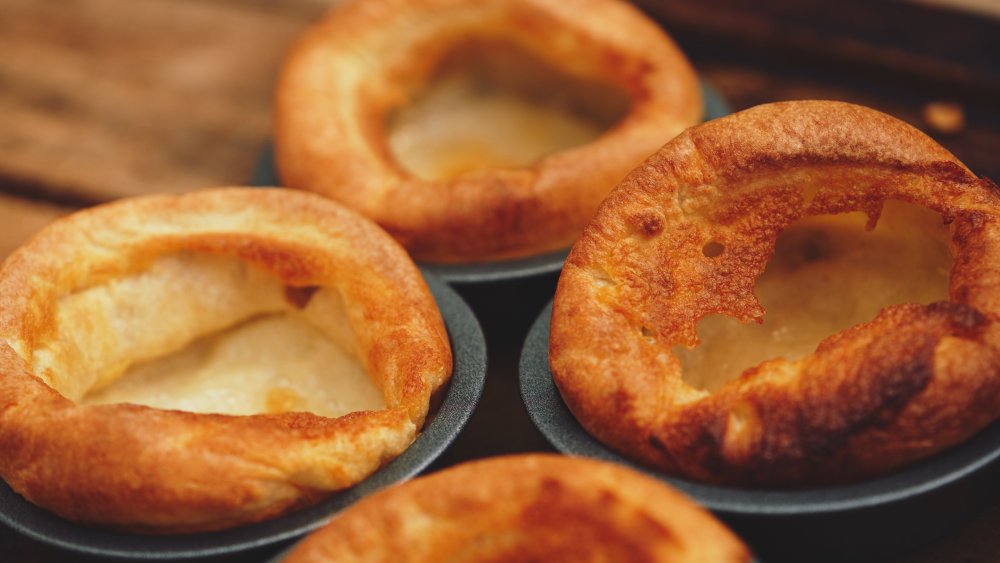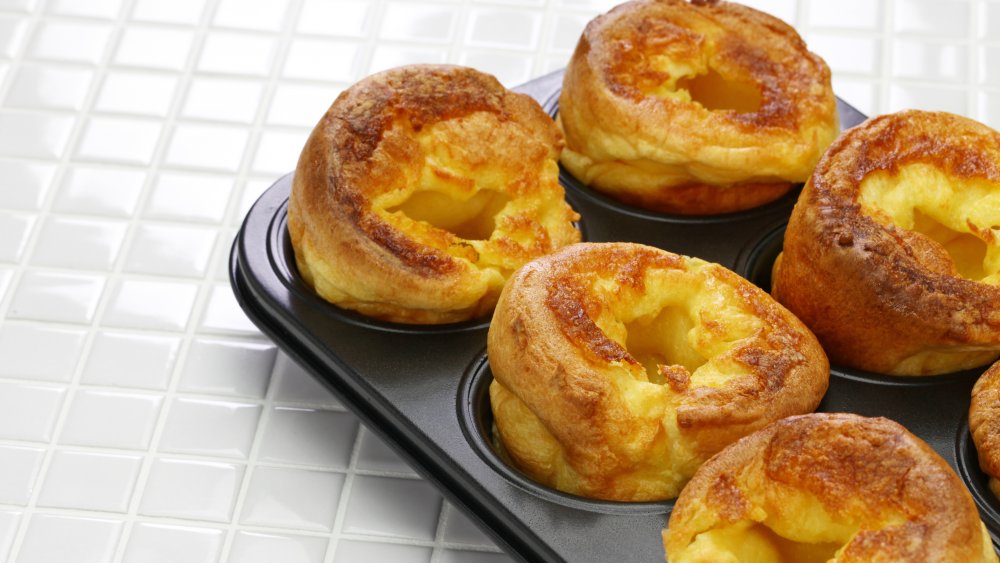What You Can Do To Make Sure Your Yorkshire Pudding Rises
A Sunday roast isn't a Sunday roast without Yorkshire pudding. If you're not familiar, this British classic is similar to a popover, only it is typically served with a savory meal (via Serious Eats). A recipe from a 1937 cookbook describes a process similar to making pancake batter. The dish relies on steam to create the puffed puddings with a golden brown and crisp exterior and a light, soft center. For a Yorkshire pudding novice, however, this can be a daunting task. Here are a few simple tips to ensure your puddings rise.
The first step is to use the correct proportions. According to The Spruce Eats, the ratio of eggs to flour to milk should be equal. Too much flour will weigh the puddings down, too much milk will create a batter that's too loose, and not enough egg will mean insufficient air beaten into the mixture, so make sure your recipe has them all at equal amounts. Once everything is measured, it's important to beat the batter very well. This does two things: it incorporates air into the mixture to assist with the rise and reduces the lumps of unincorporated flour that will ruin your puddings. If you can't seem to beat out all of the lumps, pour the batter through a mesh sieve to extract them before baking (via Lockhart Catering).
More tips to avoid fallen puddings
Yorkshire puddings need to be baked in a very specific way in order to rise properly, which requires the batter to be cold and the pan and oven to be very hot. However, before baking, it's important to let the batter rest for at least 30 minutes in a cool place.
While the batter rests, heat the oven to between 450-500 degrees Fahrenheit, depending on the recipe, and grease the pudding tin with lard or vegetable oil. Don't use olive oil or butter, since these fats will burn before reaching the necessary temperature. Once the oven has been preheated and the batter has rested, place the greased tin in the oven until the fat is smoking, then fill each cup up about one-third of the way with batter (any more and the puddings will be too heavy to properly rise) and return the tin to the oven. Then, make sure the convection is turned off and leave the oven door closed for the entire baking time. Opening the door prematurely will – you guessed it – cause the puddings to fall, even if you've done everything else right.
Finally, don't make the mistake of washing your pudding tin. This will not only disturb the seasoning of the tin but cause the batter of future batches to cling to particular areas, disrupting the rise. Instead, simply wipe it down with a paper towel before and after use.

